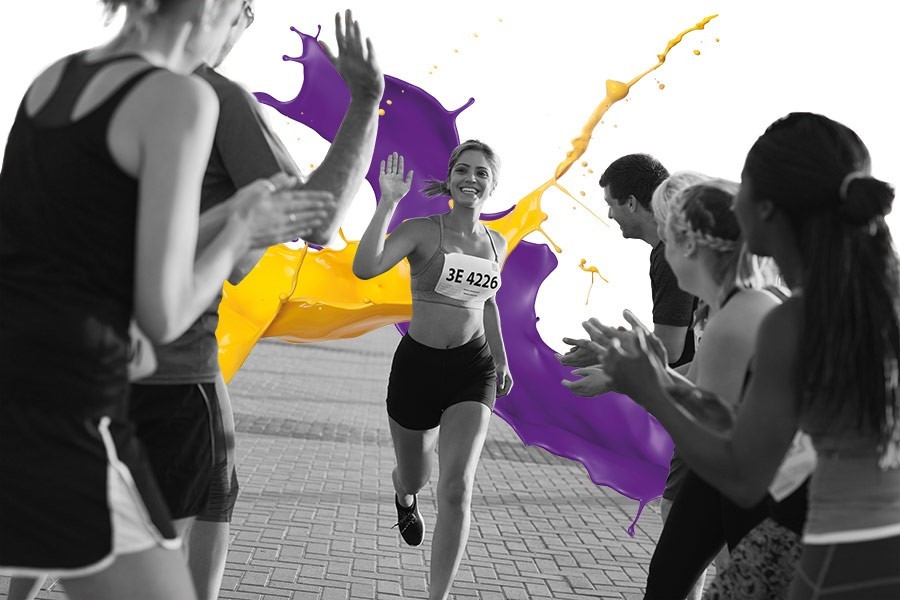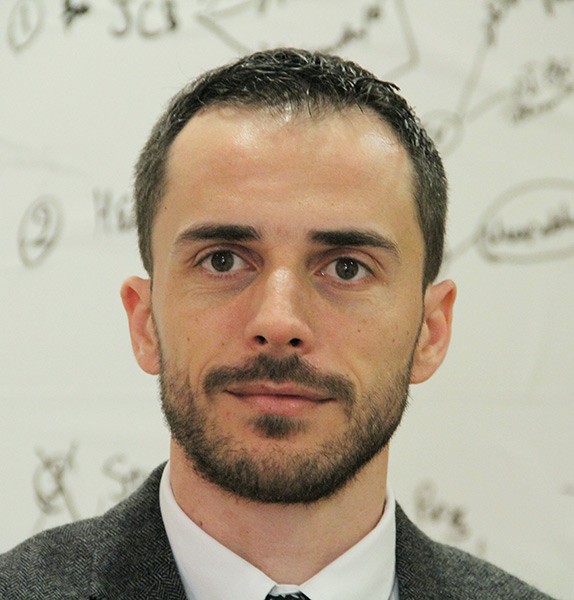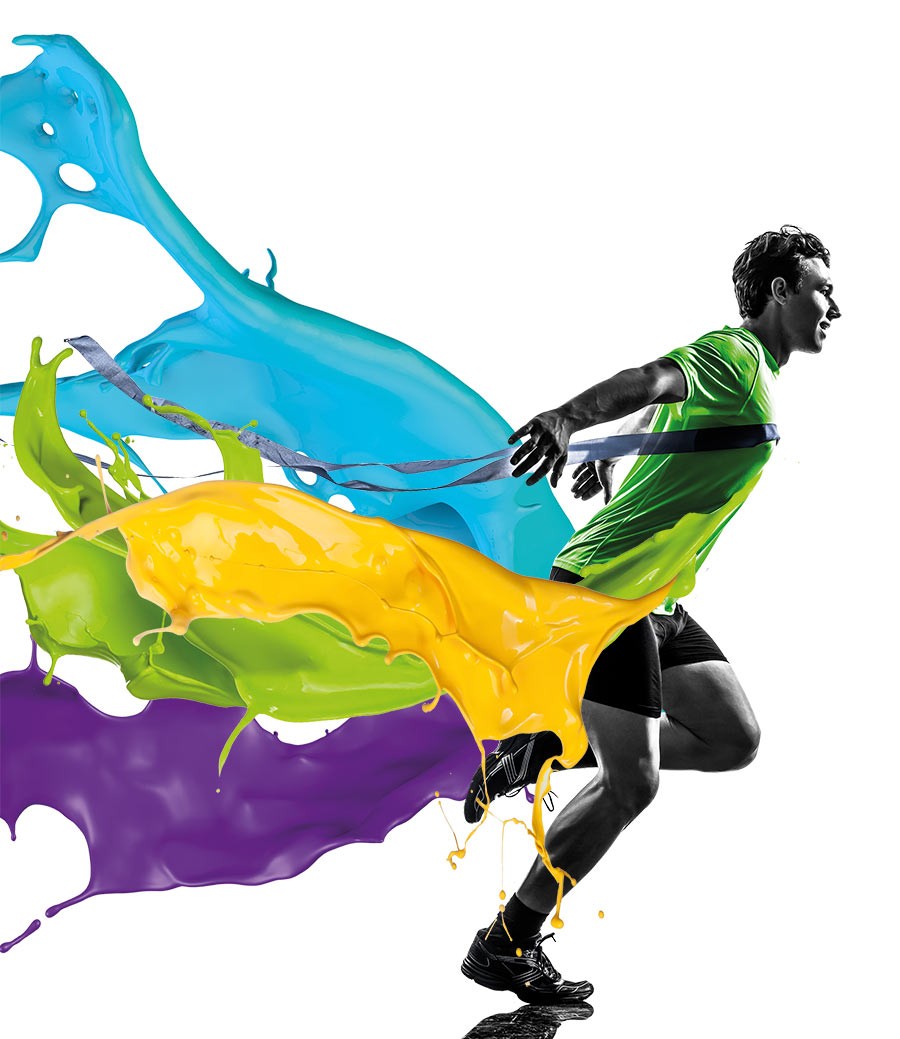Athletes who are cheered on during sporting activities are likely to perform better than athletes who don’t. The HeartLink project is investigating how to remotely cheer athletes while they are participating in sporting events. Dr Franco Curmi writes about his work for the HeartLink project.
Imagine you are running the London Marathon. You are halfway through the 42-kilometre task and are truly struggling. Your friends came to cheer you when the race started, but at this point you are alone, and exhaustion is rapidly kicking in. Perhaps you want to call it a day and stop, as you are about to hit the fatigue wall runners suffer. Maybe if your loved ones could just push you to keep on trying, it would give you the extra boost needed to run that extra mile or ten. Through the vest you are wearing, your friends’ voices start petering in as they notice your running stats sagging. But they are not anywhere near the course and are instead distributed across different continents. Sara (the Facebook addict) is in Malta, Peter (who managed three marathons this year) in Los Angeles, while John (your workaholic boss) and your sister Rebecca have just buzzed in that they are waiting for you at the finish line some ten kilometres ahead. You smile and keep on running.

The above is an imagined scenario based on the HeartLink project I (Dr Franco Curmi) am developing between Lancaster University and the University of Malta. The idea is for an athlete to be wearing a vest measuring all their vitals, which would be transmitted to social media. Online friends could then track the runner through biometric data and share their experience and well-wishes via a live video stream. These Facebook friends could even see whether it is raining, how many other athletes there are, or if their friend is in a tight spot. The idea is that they would egg the athletes on when they are struggling. The athletes should be cheered right when they need it most. And this is where it becomes interesting: while the athletes might think it’s their lucky day that their friends plugged in just when they needed them, in reality we have developed an algorithm that understands when a runner is unmotivated or tired and which nudges their friends right when help is needed. It has been called an empathetic algorithm, which collects real-time data from the biometric sensors within the vest, and with some help from a neural network, it understands the athlete’s feelings and subliminally nudges supporters.
“The idea is for an athlete to be wearing a vest measuring all their vitals, which would be transmitted on social media.”
The HeartLink project explores how crowds can remotely support others during challenging times in an event through social networks. The work is supported by the UK Research Council, Lancaster University, and the University of Malta. We have been working on the project for four years with a team that includes designers, managers, and computer scientists. This diverse team has already built the HeartLink App (heartlink.co.uk), which can do the above. The app can be installed and downloaded by the participants and their friends. Through a ‘cheer’ button they can instantly send vibrations and sounds to the athlete. This ‘cheering’ is what is meant to make the athlete aware that a crowd is following their performance. Together we looked into different ways these cheers can be communicated to the athletes. These varied from vibrations or sound effects, to live audio streaming from their friends’ devices, among others. By analysing data from social networks and the athletes’ performance, we then explored how to improve the design of systems, technologies, and final product. How can we seamlessly interact with the athletes? How can we improve engagement between the spectators and athletes to motivate them? Our vision is to turn HeartLink into a household name. HeartLink will be for cheering what Skype is for meetings.
We trialled our app in a series of experiments to figure out if athletes who receive cheers from remotely located supporters perform better. There is already plenty of research that shows that athletes perform better when they are cheered on during sporting events. We trial ran our app in a charity run, a triathlon, and a 170-mile relay race across the UK with 650 spectators across the globe. This research helped us tweak our device to find out how to connect athletes remotely. For example, one idea we developed is a relay baton for long distance relays (e.g. the Queen’s Relay Race or the British Relay Race). The baton collects data from biometric and location sensors, and broadcasts this data to spectators instantaneously. The baton communicates the cheers to the athletes through small, controlled vibrations, allowing the athlete to be aware that the crowd is following their performance.
“Which spectator is best? The athlete’s partner cheering them on or a thousand strangers?”

Through HeartLink we could compare and contrast different ways to remotely cheer and support others in real-time. The app and the tools we developed for it let us measure the effectiveness of this support on the athletes and monitor their performance. Performing research through social networks lets us gather data on the people cheering. For example, which spectator is best? The athlete’s partner cheering them on or a thousand strangers? We found that the HeartLink app was most effective during charity events. People seem to prefer remote cheering when the athlete is running for a good cause. To answer the above question, the data showed that cheers by mum and dad are not the most relevant, acquaintances seem to have a more powerful effect. Put differently, you would expect your partner to be cheering you on, but finding your boss rooting for you instead on a Saturday morning may be more surprising and effective.
After starting as a Ph.D. adventure at Lancaster University, the HeartLink project has now evolved into an underlying platform that facilitates the building of relationships between spectators and athletes. As an unexpected consequence, it has also helped build the relationship between Lancaster University and the University of Malta and their Faculties of ICT and Economics, Management and Accountancy (FEMA). We are now working with NGOs and industrial partners to turn this research into an app that people can and want to use. We want to make it possible for people to raise money through this app while supporting their loved ones in fundraising events—perhaps at the next London Marathon.





Comments are closed for this article!